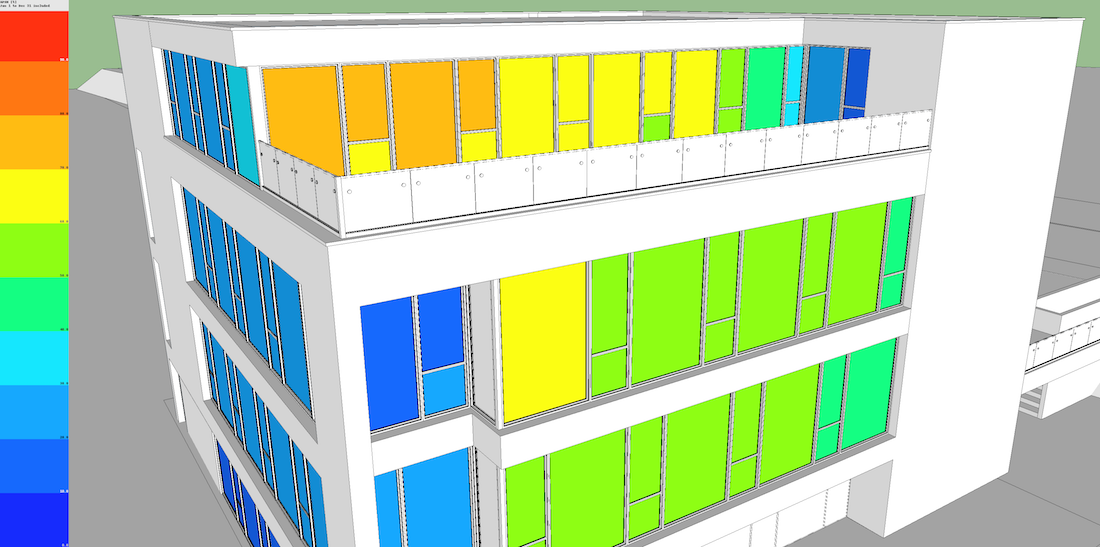
Annual Probable Sun Hours (APSH) represents the sunlight that a given window may expect over a year period. APSH is expressed as the percentage of direct sunlight hours divided by number of hours when sky was clear with sun. The sunny hours information is provided by the weather data file.

APSH is a measure over a year period. The extension also provides the Winter Probable Sun Hours indicator variant (WPSH) that uses the period from 21st September to 21st March.
APSH is measured on the outside face of the window. If the windows of the model are defined by components, you may need to use the 'Create copy' feature to ensure each window has its own sensor. The default value for the virtual surface offset is set to 1cm for this extension, so the sensor would be 1cm above the surface of the window component. About copy in instances, see page Create virtual surfaces.
APSH of a point on the facade depends on building site weather and environment (relief, obstruction buildings), building shape, facades orientation and sun protections. It is independent on materials used on facades or environment and on building interior.
In UK policies, APSH is often used as a ‘spot’ measure on the mid-point of a window, thus by default this extension uses a 'single sensor in the center', however any kind of sensor grid can be selected.
In UK, policies usually refer to the BRE Handbook ‘Site Planning for Daylight and Sunlight 2011: A Guide to Good Practice, Second Edition’ (2011). The BRE Handbook gives not mandatory guidelines drafted primarily for use with low density suburban developments.
Sunlight is heavily influenced by orientation, north facing windows may receive sunlight on only a handful of occasions in a year, and windows facing eastwards or westwards will only receive sunlight for some parts of the day. Therefore, BRE guidance states that only windows with an orientation within 90 degrees of south need be assessed.
BRE recommends that the APSH received at a given window in the proposed case should be at least 25% of the total available, including at least 5% in winter. Where the proposed values fall short of these, and the loss is greater than 4%, then the proposed values should not be less than 0.8 times their previous value in each period.
Open SketchUp model. Follow next instructions to prepare your model for DL-Light calculations.
Open APSH dialog from toolbar
![]() or menu
Extensions -> De Luminae -> APSH -> Activate extension
and enter the parameters of the calculation.
or menu
Extensions -> De Luminae -> APSH -> Activate extension
and enter the parameters of the calculation.
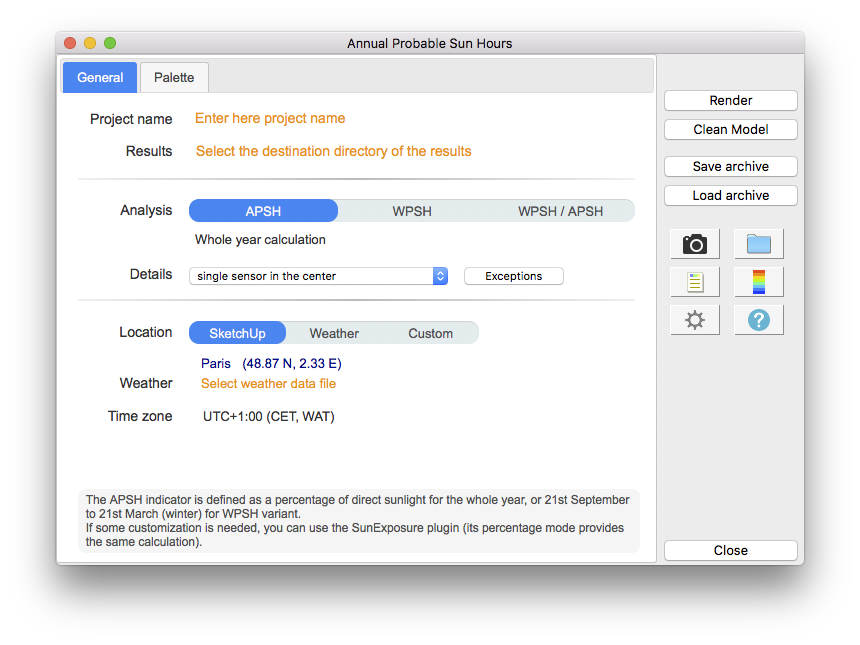
Fields description:
Project name - Project name is used during export and for output filenames generation. The SketchUp model name is used by default.
Results - Directory where model
will be exported for calculation. It should be an existing or a
new directory where user has appropriate write/read privileges.
When calculation is started model geometry and resulting files
will be saved in APSH_output
subdirectory.
For SketchUp projects stored on network disk (Windows), see
Work on a copy of the model.
Analysis - Selection of the APSH or WPSH variant, or the WPSH / APSH ratio. The report displays values in hours and percent.
Details - By default, APSH calculation uses a 'single sensor in the center'. But a different sensor grid configuration is possible. The calculation uses the average of the surface sensors if the grid used has more than one sensor.
DL-Light allows to choose:

See sensors selection for more information on the choices of proposed sensors.
Location - Building location coordinates. This info is used in combination with weather data to generate correct sky distribution. Location can be based on SketchUp model location, current Weather file location or be Custom. Below is dialog for Custom location definition.
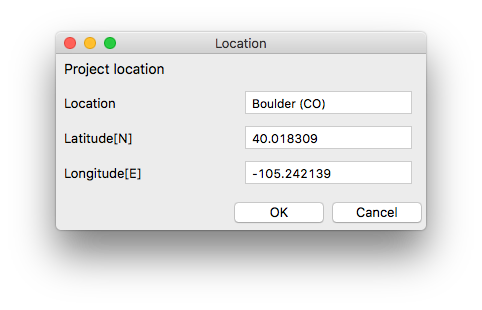
Weather - Select annual weather file for the building location in Energy Plus weather file format. The weather file can be selected in the list provided by DL-Light or downloaded from Internet. See page Weather data.
Time zone - Display of the time zone used for the calculations.
The time zone is defined by the selected climate data file.
Nota: when a model is located in SketchUp, SketchUp proposes a
time zone based on the longitude of the place. This value is
sometimes wrong, especially for European or Asian countries.
Palette of false colours can be defined with precision. 3 options for palette are given, Automatic, Gradient and Custom:
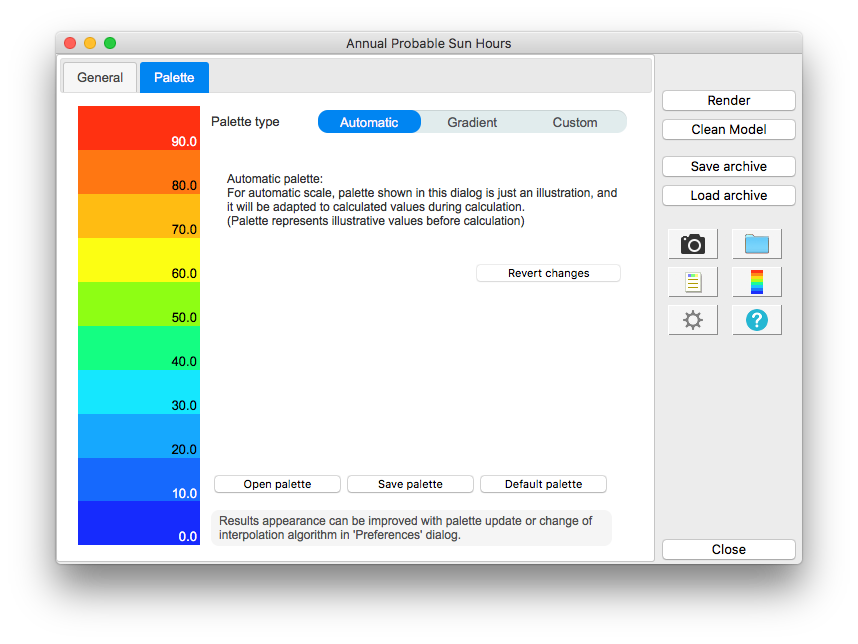
After entering the parameters, select one or few surfaces and press
Render or
 button.
button.
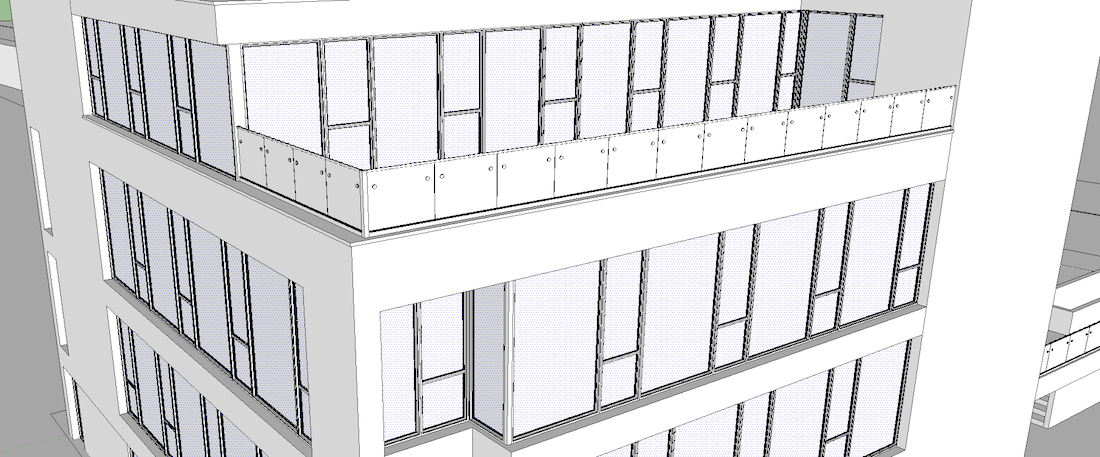
Calculation time depends on number of selected surfaces and model's complexity.
When results are imported, selected surface will have appropriate false colors and Palette and Report dalogs will be opened.

Results analysis.
The Report dialog
 displays the distribution of results over current palette and
calculation input parameters.
displays the distribution of results over current palette and
calculation input parameters.
The APSH value of the surface is expressed as a percentage and in hours.
To meet the BRE recommendation "windows with an orientation within 90 degrees of south", the south angle column displays the value of the angle between the horizontal component of the surface normal and the direction of the south.
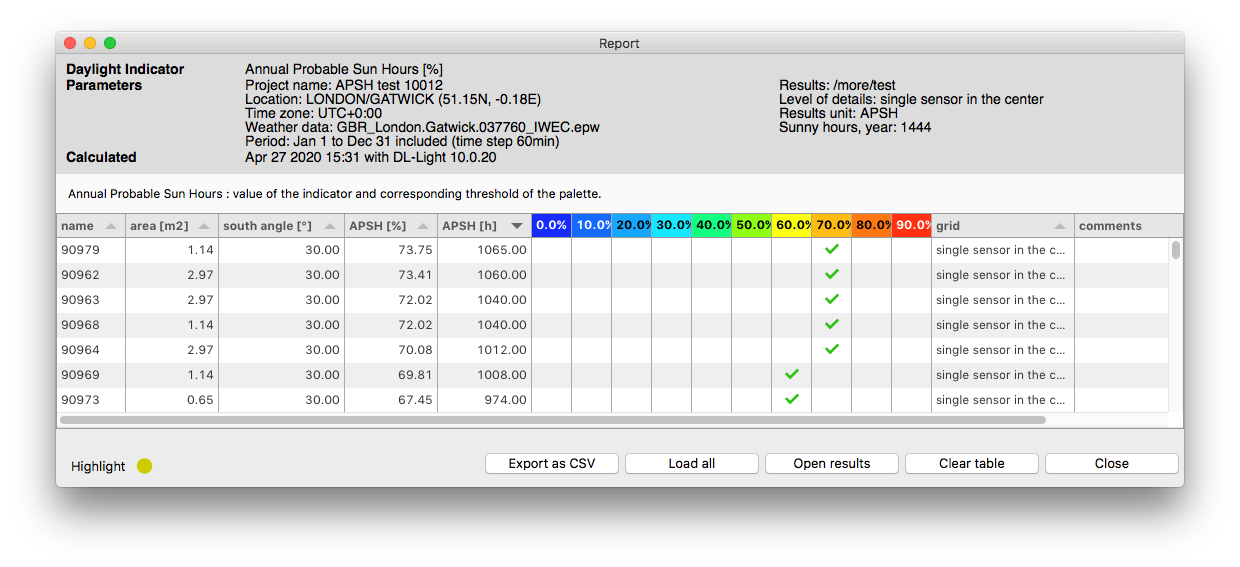
Show/Hide Sensors and Values
![]() explores results directly in the model for each sensor.
explores results directly in the model for each sensor.
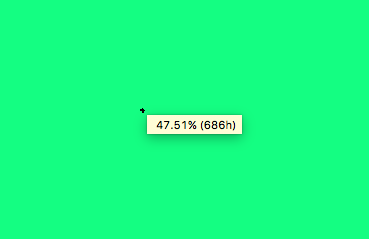
For further calculations in the same model:
 .
.
DL-Light uses a calculation cache algorithm. It automatically detects if a surface requires recalculation or if a previous result can be reused. By default, the cache keeps the information of the last 10 calculations (value configurable in the preferences).
Archiving results:
DL-Light allows to archive all the results of a calculation: reports, textures and calculation steps (exported Radiance model, weather file, ...). This archive can be reloaded on the model, subject to using exactly the same model as during the calculation.
See the page Archiving results for more informations about this feature.
See the page Comparison of results for more informations about comparison of archives.
Snapshots:
Current SketchUp model view with imported results can be exported with
palette
 or without palette
or without palette
 to png format. Open the folder of images with
to png format. Open the folder of images with
 .
.
This option is not supported in trial version of the extension (see
licence information).
